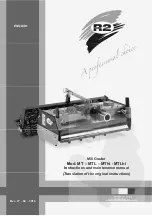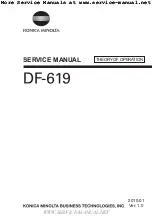
Page 13
ETS 300 441: February 1996
5.3.2
Normal test power source
5.3.2.1
Mains voltage and frequency
The normal test voltage for equipment to be connected to the ac mains shall be the nominal ac mains
voltage. For the purpose of conformance testing, the nominal voltage shall be the declared voltage or any
of the declared voltages for which the equipment is designed.
The frequency of the test power source corresponding to the ac mains shall be 50 Hz
±
1 Hz.
5.3.2.2
Secondary battery power sources
When the equipment is designed for operation from a secondary battery power source, the normal test
voltage shall be the nominal voltage of the battery (12 V, 24 V etc.).
5.3.2.3
Other power sources
When the equipment is designed for operation from other power sources, the normal test voltage shall be
stated by the equipment manufacturer.
5.4
Extreme test conditions
5.4.1
Extreme temperatures
For tests at extreme temperatures, measurements shall be made in accordance with subclause 5.5 at
- 15°C (± 3°C) and at + 55°C (± 3°C).
5.4.2
Extreme values of the test power source
5.4.2.1
Mains voltage and frequency
The extreme test voltages for equipment to be connected to the ac mains shall be the nominal mains
voltage ± 10 %. The frequency of the test power source shall be 50 Hz ± 1 Hz.
5.4.2.2
Secondary battery power sources
When the equipment is designed for operation from a secondary battery, the extreme test voltages shall
be 1,3 and 0,9 times the nominal voltage of the battery (12 V, 24 V etc.).
5.4.2.3
Other power sources
When the equipment is designed for operation from other power sources, the extreme test voltages shall
be stated by the manufacturer.
5.5
Procedures for tests at extreme temperatures
The equipment shall be placed in the test chamber at normal temperature. The maximum rate of raising
or reducing the temperature of the chamber shall be 1ºC/min. The equipment shall be switched off during
the temperature stabilising periods. The sequence of measurements shall be chosen and the humidity
content in the test chamber shall be controlled so that excessive condensation does not occur.
Before conducting tests at extreme temperatures, the equipment in the test chamber shall have reached
thermal balance and be subjected to the extreme temperature for a period of between 10 hours and
16 hours.
For tests at the lower extreme temperature, the equipment shall be switched on to standby or receive
condition for one minute before measurements are performed.
For tests at the higher extreme temperature, the equipment shall be switched on for half an hour before
measurements are performed.











































